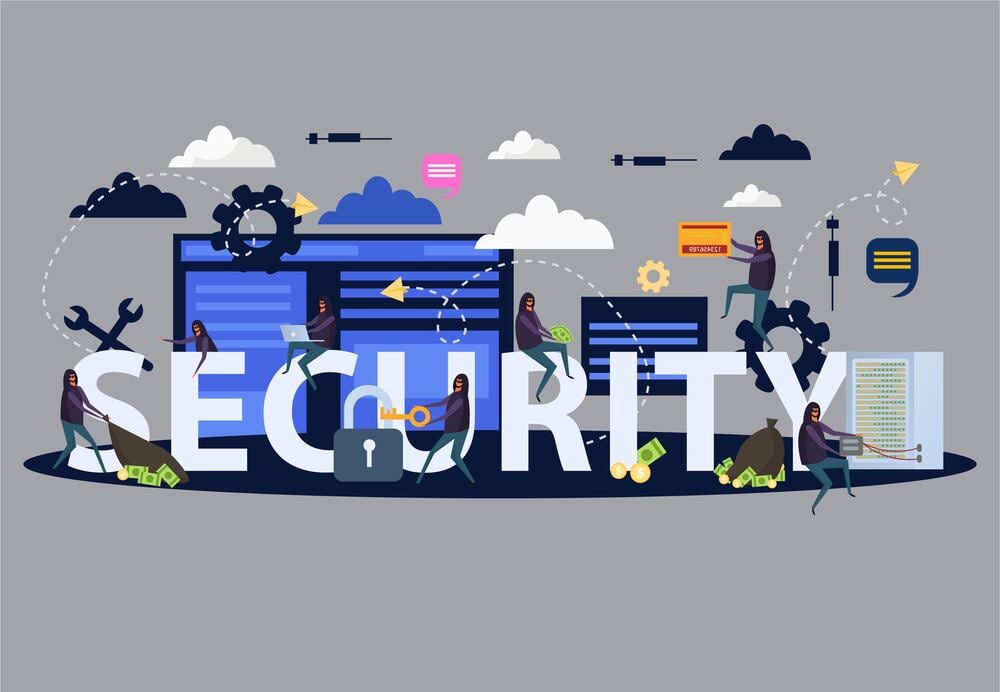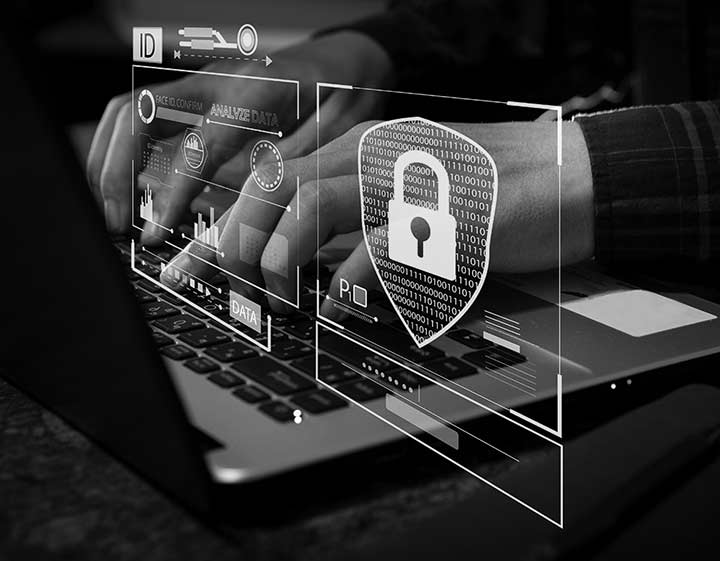The growth of the internet is a double-edged sword. It allows businesses more versatility than ever before through the use of powerful systems, software and programs that offer valuable insights. But it can sometimes be difficult for business leaders to know how to properly manage online systems, which leaves vulnerabilities in your environment for cybercriminals to exploit. It’s not impossible to protect your business against cyberattacks. In fact, if you know some of the most common cyber risks, it can help you in installing the right types of cybersecurity defenses and monitoring them regularly. In this article, we’ll discuss the most common cyber threats, how to identify them, how to combat them, and the steps you can take to create efficient risk management systems in your business.

Most Common Cyber Threats
Cybercrime is a major source of financial loss in the modern world. It costs the world tens of trillions of dollars a year and can cost businesses hundreds of thousands in damages from a single successful attack. That’s why it’s so important for businesses to understand the vulnerabilities in their information security and what potential threats look like.
There are countless ways hackers can infiltrate a network, but they typically stick to a handful of tried and true methods.
-
Malware.
The term is short for “malicious software” and can include anything from viruses to spyware to ransomware. It typically enters a network when someone clicks on a dangerous link or downloads a suspicious file or software. Depending on the type, malware can restrict access to the network, covertly track or steal sensitive data or render the system inoperable.
-
Phishing.
This style of cyber risk relies on fake communications to gain access to sensitive information. It usually comes in the form of an email, which might look and sound realistic, containing a link the user requests you click on. The link typically installs some type of malware on your network.
-
Man-in-the-middle (MIM) attack.
In this type of cyberattack, a hacker places themselves in the middle of a two-way connection. Business email compromises are particularly scary MIM attacks, where the bad actor inserts themselves in the middle of an email conversation, gathering sensitive data and sometimes even impersonating one or both parties. Another example, if an employee was working remotely from a coffee shop and using public Wi-Fi to connect to their business network, a hacker could place themselves between the Wi-Fi and the network so all the data passes through them. This allows them to filter and steal whatever is being passed to the network.
-
Denial of service.
This form of attack is like an ambush on your network. Hackers flood the system with traffic until bandwidth and resources are maxed out so that your network can no longer fulfill legitimate requests. Another form of this tactic is a distributed denial of service (DDoS) in which criminals launch an attack from multiple compromised devices.
-
SQL injection.
Structured query language is what your server uses to manage and store data. In this type of attack, hackers insert malicious code into a server’s SQL so it reveals data information it was designed to protect. This significant data breach can be achieved simply by inputting malicious code into unprotected search boxes on your website.
-
IoT attacks.
IoT refers to the “Internet of Things,”physical devices that are connected to the Internet, gathering and sharing data. IoT might be a smart thermostat in your home, sensors on shop floor machinery to improve manufacturing production, or asset tracking solutions to monitor fleet operations or locate products. IoT attacks target those unsecured, internet-connected things in our lives as a means of accessing the network.
-
Zero-day exploit.
These attacks come in the small window of time between a vendor finding a vulnerability and implementing a patch to fix it. Businesses using that software can be especially susceptible to these attacks if it’s not constantly monitoring its network.
-
DNS tunneling.
In this situation, hackers use established DNS protocols to circumvent firewalls and insert malware into networks. Cybercriminals can use this technique to extract data from your servers by establishing their domain as the authoritative server in the connection.
Cybersecurity Answers
There are lots of things you can do to keep your business safe from these cyber risks. When protecting your information systems, it’s best practice to have multiple measures running at once. This is a layered approach to cybersecurity that helps defend against the different kinds of attacks like those listed above.
Outsourced IT
Using outsourced IT support is an easy way to mitigate your cyber risks. It gives you access to a team of information technology professionals who can help you continuously monitor your network—which may prevent some cyber incidents altogether—and manage your cybersecurity.
Small businesses, in particular, can benefit from outsourcing their IT because it gives them access to advanced tools they may not have the budget for or experience to use on their own. When every business, regardless of size, faces enterprise risks to their cybersecurity, it helps to have enterprise-level protection too.
Security Tools
There are also tons of different tools that businesses can use to protect their networks. Some essential measures include:
- Network security monitoring.
This is exactly what it sounds like: monitoring your network traffic and queries to detect any cybersecurity risks. Network monitoring can help companies identify and avoid problems before they happen. - Encryption. Encrypted data and messages are more secure because an algorithm has scrambled the information to make it unreadable without the encryption key. It can help to protect business communications and sensitive information.
- Web vulnerability scanning. This process tests web applications for vulnerabilities by creating fake malware code and seeing where it sticks. It can let businesses know where they need added security to prevent malware attacks.
- Antivirus software. Some of the most basic cybersecurity tools include types of antivirus software. These programs scan incoming files or code moving through your network to detect, flag and remove potential threats. They can be particularly helpful with preventing phishing attacks in email inboxes.
- Firewalls. These are like a filter for your network. Firewalls scan for malicious code and established threats and, when detected, don’t let them through to infect your system.
- Multi-factor authentication. Imagine if your mobile device required a fingerprint scan and a pin code to unlock. That’s multi-factor authentication. It’s when a network requires users to establish their identity in two ways to gain access to apps and online resources within the network.
- Managed detection and response (MDR): This solution is your insurance policy for when something does happen. An employee working from home one night gets hacked through a compromised smart device on their home Wi-Fi network. MDR provides real-time threat detection and response, shutting down a cyber breach before it escalates.
Even simple measures such as storing and restoring from data backups, having a strong password methodology and effectively training your employees to recognize and avoid cyber risks can go a long way to protect your business.
Cybersecurity initiatives within the office can ensure your team is working together to protect your network. Things like documenting your cybersecurity policies for employees to reference and regular cybersecurity awareness training can equip your team with the knowledge they need to stay safe online.
How to Improve Your Risk Management
Cyber risk management is another important part of the puzzle when it comes to protecting your business. There are five things every business can do beyond installing security tools to mitigate their cyber risks.
Conduct a risk assessment
Risk assessments help you identify vulnerabilities in your system and address them before they become a problem. It gives you a comprehensive view of your network, the protocols you have in place and how they’re performing. You need to know what you’re protecting, identify when it’s in transit and understand how it’s stored. What are the vulnerabilities along that path and how can they be addressed?
Implement network access controls
Restricting access to your network helps safeguard your data. It can protect you from inside threats by limiting employees’ access to an as-needed basis. Taking a zero-trust approach to cybersecurity is a great way to mitigate potential internal threats because you know there is no unauthorized access to areas of your network that contain sensitive information.
Establish a patch management schedule
Routinely updating patches in your system and software is an integral part of keeping them as secure as possible. Many people overlook how essential it is to regularly check for holes or problems with previous patches, but this maintenance is what keeps hackers out and your data safe. Establishing a schedule can help you ensure you’re routinely updating and adding patches where necessary.
Monitor network traffic
Networks are under constant threat of attack, so keeping a watchful eye on your traffic can help you to identify problems early. Monitoring traffic can allow you to see cyber threats in real-time and stop them before they infiltrate your network. It does, however, take diligent effort and lots of time to be this hypervigilant, so some businesses opt to partner with an outsourced IT company that can monitor networks for them.
Create an incident response plan
Quickly responding to cyberattacks is key to keeping damage to a minimum. That’s why every business should have an incident response plan to inform employees in those crucial moments if an attack does slip through. These plans should enumerate protection measures, detection and analysis techniques, containment, eradication and recovery protocols and post-incident activity.
At Daystar, we help clients find the peace of mind that their business is safe from cyber risks. We would love to be your partner in cybersecurity and help protect your business. Contact us today for a consultation















